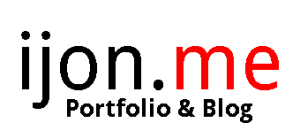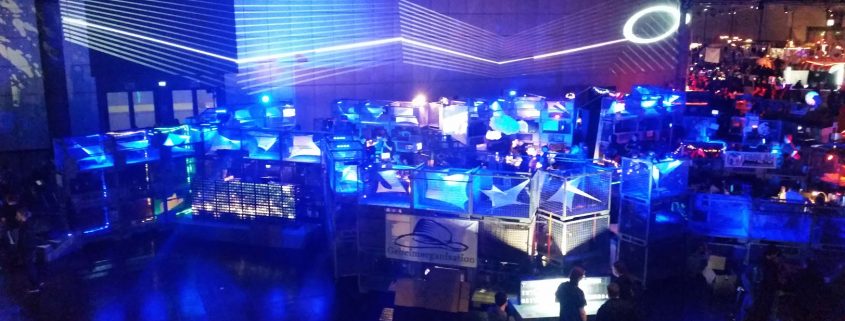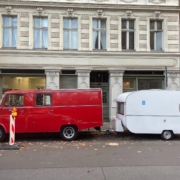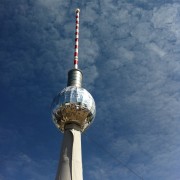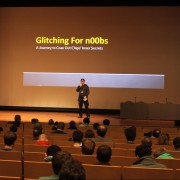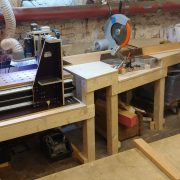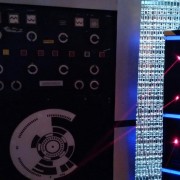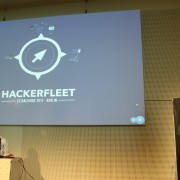Planning and realization of “The Hive”
Planning
Planning began in April 2017 when it became apparent that the Chaos Communication Congress would probably be in Leipzig. At this point in time I talked to the project management about the possibilities c-base could have. At about this time I developed the central question, which I asked on many occasions on board the c-base. It was:
What is the largest installation we can build for the Congress?
Although the question was regarded as exciting, no answers reached me. That’s why I sat down with himis-suski in the middle of July and developed some ideas. That evening the idea arose to use box pallets as infrastructure, as well as the idea to build a honeycomb structure from box pallets. On the part of the project management, it was necessary to submit a comprehensive concept for the project by the end of August.
Concept
I wrote the concept in large parts on my own. The project management planned with the Autodesk AutoCAD software, which I have not yet mastered. I made the first sketches with LibreCAD, but as soon as it became necessary to work in the official planning files of the project management, I had to pass. I got support from harle, who was always ready to create or modify CAD drawings with AutoCAD, after I had met with several people and decided on the necessary changes.
Download Concept PDF
The HIVE Concept 0.7 from 27.11.2017
For the necessary event technology we held several meetings with a member of the Bachstelzen. For the decoration by means of cloths, fabrics and light we met several times with members of VisualPHI, also these meetings led to further changes in the planning and the budget.
At this year’s congress, assemblies (assemblies are thematically focused groups, for example, or a group operating a hacker space or a CCC experience exchange group in a city, called Erfa) were grouped into so-called clusters for the first time. Clusters focus on a specific topic and attract assemblies that deal with this topic. Although I have repeatedly asked various participants of the hive to develop thematic proposals, there were unfortunately no proposals. That’s why I decided that this year’s theme should be “Digital Fabrication”. This refers to all technologies, machines and devices that take bits and bytes and thus create or modify matter, i. e. devices and machines that bridge the gap between virtual reality and physical reality.
Examples of these technologies include 3D printers, laser cutters and embroidery and knitting machines.
Orga-Team
It was already foreseeable that during the congress and during the last days before the congress I would spend most of my time with the organisation of the heralds and stage managers, so it was necessary to build up a team in time, which would take over the setup, operation and dismantling of the installation.
I was therefore very grateful that the c-base members cven, uk and Kristall agreed to assume this responsibility.
Realization
I could only participate in the preparation before 10 December. During this period there were only two projects that I initiated and carried out together with many volunteers. One of the projects was that I bought three wire mesh boxes where we could try out possible ideas for use and decoration. The other project was the test installation of the subantenna, of which I made a short video. The subantenna was initially produced and built for the Chaos Communication Camp 2015, I wrote an own blog post about this project.
Art-theoretical superstructure
Around the development of the concept we also developed a theoretical superstructure, a theoretical foundation that explains the individual decisions of the design of the installation. Many thanks to Christian Römer who developed important impulses and suggestions for the development of the art theoretical foundation.
The theory of “Social Sculpture” states that every human being can contribute to the well-being of the community through creative action and thus influence society in a formative way. This extended concept of art (according to Beuys) is not limited to the creation of a work of art, for example a song or a novel. Rather, we are artistically active when we create an organism in which society can be shaped together.
This idea of an anthropological concept of art is followed by “The Hive”, in which its structure imitates a form of organization from the animal kingdom, namely the honeycomb. The honeycomb is a cell made of flat hexagonal cavities.
The central element of the installation was deliberately based on artistic interpretations of urban architecture by means of ship containers. The global industry knows different kinds of standard logistic elements in masses, from the market of possibilities we chose the “little sister” of the shipping container – the DB wire cage pallett.
The full text can be found in the official logbook entry of c-base
Acknowledgements
Although we tried very hard and tried to ask each participant individually, this list will only be 90-95% complete. I would like to apologise to all those who, despite the Orga team’s great efforts, have not made it onto this list by mistake.
I would like to express my sincere thanks to these volunteers (in random order) for the small and big contributions they have made to make this crazy idea a reality.
Ligi, C_ascha, Snogard, Dd, Raupi, Cven, Riot, Kristall, Uk, F00, Mo2k, Nickfarr, Beh, Visualphi, Tobias, Johann, Cmile, Dazz, ijon, Wilmaa, Tom, Fengel, Ihmis-suski, Bergie, Ajuvo, Raimo, Grmpf, Coon, T, Rubbel, Miro, Lux, Ryo, Lucky, Tom, Enno, Josh, Arl, Jakob, Vincent, Walklife, Kr0l, Emmo, Prom, Messias, Olf, T1nt@n, harle
Thank you very much! Without all of you, it would have been impossible to revive the c-base heritage.
I would also like to express my sincere thanks to the team of the CCC, which again and again solved serious problems for us and provided materials, tools, tools, a significant part of the total budget, forklifts and angels.
Images
Links
- Wiki-Page of the HIVE in the 34c3-Wiki
- c-base Logbuchentry about the HIVE
- VisualPhi – Art from Fabric, Cloth and Light
- Twitter: #1000waystousegitterbox

